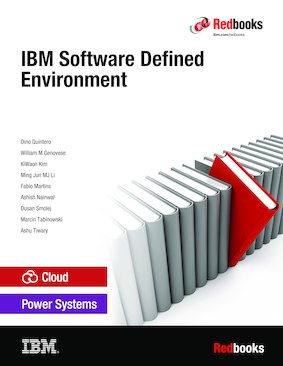
Published on 13 August 2015, updated 14 August 2015
Read in Google Books Order hardcopy
Share this page:
ISBN-10: 0738440442
ISBN-13: 9780738440446
IBM Form #: SG24-8238-00
Authors: Dino Quintero, William M Genovese, KiWaon Kim, Ming Jun MJ Li, Fabio Martins, Ashish Nainwal, Dusan Smolej, Marcin Tabinowski and Ashu Tiwary
Abstract
This IBM® Redbooks® publication introduces the IBM Software Defined Environment (SDE) solution, which helps to optimize the entire computing infrastructure--compute, storage, and network resources--so that it can adapt to the type of work required. In today's environment, resources are assigned manually to workloads, but that happens automatically in a SDE. In an SDE, workloads are dynamically assigned to IT resources based on application characteristics, best-available resources, and service level policies so that they deliver continuous, dynamic optimization and reconfiguration to address infrastructure issues. Underlying all of this are policy-based compliance checks and updates in a centrally managed environment.
Readers get a broad introduction to the new architecture. Think integration, automation, and optimization. Those are enablers of cloud delivery and analytics. SDE can accelerate business success by matching workloads and resources so that you have a responsive, adaptive environment. With the IBM Software Defined Environment, infrastructure is fully programmable to rapidly deploy workloads on optimal resources and to instantly respond to changing business demands.
This information is intended for IBM sales representatives, IBM software architects, IBM Systems Technology Group brand specialists, distributors, resellers, and anyone who is developing or implementing SDE.
Table of Contents
Chapter 1. Introduction to the IBM Software Defined Environment
Chapter 2. Reference architecture framework and methods
Chapter 3. SDE reference architecture
Chapter 4. Cloud provider installation guidelines and implementation scenarios
Chapter 5. IBM big data and analytics capabilities
Chapter 6. Advanced cloud provider scenarios
Chapter 7. Cloud user deployment and use scenarios
Chapter 8. What's next in reference architecture
Appendix A. IBM Software Defined Network for Virtual Environments
Appendix B. Cloud computing review